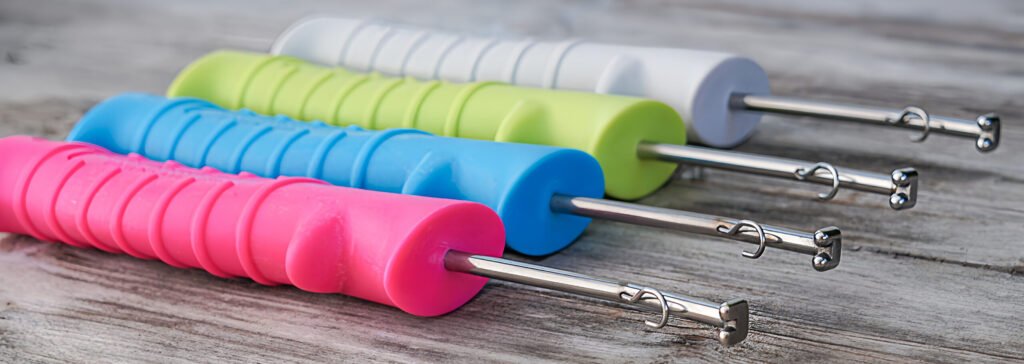
On-the-Water vs. At-Home Fish Hook Removal Methods: What Really Works?
The line goes taut, you set the hook hard, and suddenly you’re looking down at a treble hook buried deep in your thumb. Your mind races through the options: attempt removal right here on the water with whatever tools you have, or endure the pain and potential complications until you can get back to shore and deal with it properly at home.
This scenario plays out thousands of times each fishing season, and the decision you make in that critical moment can mean the difference between a minor inconvenience and a trip to the emergency room. With infection risk climbing and your fishing trip hanging in the balance, understanding the real effectiveness of different removal methods isn’t just helpful knowledge – it could save your day and potentially much more.
The Common At-Home Fish Hook Removal Methods
Most anglers rely on traditional techniques passed down through fishing communities, but these methods come with significant trade-offs that many don’t fully understand.
String-Yank Technique
The string-yank method involves looping fishing line around the hook’s curve and yanking it out in one quick motion. Proponents praise its speed and the fact that it requires no special tools – just fishing line that’s already in your tackle box.
However, this technique’s major drawback is its unpredictability. Success depends heavily on hook angle, penetration depth, and the person’s pain tolerance. When it works, removal is swift. When it fails, the hook often becomes more deeply embedded, creating a significantly worse situation..
Pliers Push-Through
Many anglers turn to needle-nose pliers for hook removal, either pushing the hook completely through to clear the barb or cutting the hook’s eye and backing it out. This approach offers more control than the string method and uses tools commonly found in tackle boxes.
The push-through technique works well for hooks that haven’t penetrated too deeply, but requires enough clearance to complete the full motion and damages previously undamaged tissue. This approach becomes significantly more challenging when dealing with treble hooks or hooks embedded near joints, tendons, or other sensitive areas.
Homemade Solutions and Field Improvisation
Desperate situations often lead to creative solutions: ice for numbing, makeshift extraction tools, or attempting to cut around the hook. While resourcefulness deserves credit, these improvised methods introduce substantial risks.
Ice can provide temporary pain relief but doesn’t address the mechanical challenge of safe extraction. Cutting around the hook risks further damage and creates unnecessary wounds. Using non-medical tools can increase infection risk, especially in outdoor environments where sterile conditions are impossible to maintain. These methods might seem logical at the moment, but they can potentially create complications that far exceed the original injury.
On-the-Water Realities
The luxury of waiting until you’re home for hook removal often doesn’t exist. When you’re miles from shore on a lake or fighting current in a moving river, delaying treatment isn’t just uncomfortable – it’s potentially dangerous.
Barbed hooks don’t just sit passively in tissue. Every movement, every cast, every attempt to continue fishing can potentially create additional tissue damage. What starts as a minor puncture wound can quickly become a serious injury requiring professional medical attention.
Remote fishing locations compound these challenges. Cell service disappears, the nearest hospital might be hours away, and weather conditions can change rapidly. A hook embedded in your hand becomes exponentially more serious when you’re dealing with approaching storms or fading daylight.
The unstable platform of a boat creates additional complications for removal attempts. Trying to manipulate small tools while dealing with waves, wind, and limited space increases the likelihood of mistakes. Hand tremors from pain or adrenaline make precise movements nearly impossible, turning simple removal techniques into dangerous procedures.
Infection risk climbs steadily with each passing hour. Lake water, river sediment, and general outdoor exposure introduce bacteria into the wound site. What might be manageable with immediate proper treatment becomes a serious medical concern when removal is delayed by hours or even days.
Professional-Grade Solutions for Real-World Fishing
The DHUKR® Tool addresses the fundamental problems that make traditional removal methods inadequate for serious anglers. Unlike improvised techniques or repurposed tools, it was specifically engineered for safe, effective fish hook removal in challenging conditions.
The tool’s ergonomic one-handed operation and design recognizes that hook injuries often leave you with limited dexterity. You can maintain control of your hook situation while performing the extraction, whether you’re steadying yourself on a boat or dealing with an injury to your dominant hand.
The controlled barb engagement mechanism on the DHUKR® solves a core problem with most removal attempts. Instead of hoping the barb clears tissue cleanly, the DHUKR® Tool secures and controls the hook and barb throughout the extraction process. This eliminates the guesswork and reduces the chance of additional tissue damage during removal.
Most importantly, the DHUKR® Tool carries FDA registration as a medical device. This isn’t just a regulatory checkbox – it represents rigorous testing, quality standards, and safety validation that no improvised tool or traditional technique can match. When you’re dealing with a medical emergency in a remote location, having equipment that meets professional medical standards provides peace of mind that generic tools simply cannot offer.
The DHUKR® tool works equally well for immediate on-water removal and more controlled home treatment. This versatility means you’re prepared regardless of when or where hook injuries occur, eliminating the difficult decision between inadequate field treatment and potentially dangerous delays.
Preparation Beats Improvisation
Fish hook injuries will happen. The only question is whether you’ll be prepared with proper tools and knowledge, or forced to improvise with whatever happens to be available.
Professional anglers understand that tackle boxes should include safety equipment alongside lures and lines. The DHUKR® Tool weighs less than most fishing pliers but provides capabilities that far exceed any improvised solution. When a hook finds your hand instead of a fish’s mouth, having the right tool available transforms a potential emergency into a manageable inconvenience.
Don’t gamble with your trip. Serious anglers invest in quality rods, reels, and electronics to improve their fishing success. Investing in proper hook removal tools protects the angler behind all that equipment. Add professional-grade safety tools to your kit before you need them, because when fish hook injuries occur, improvisation isn’t a strategy – it’s a risk you can’t afford to take. The patented FDA licensed and registered DHUKR® Tool is the solution!
